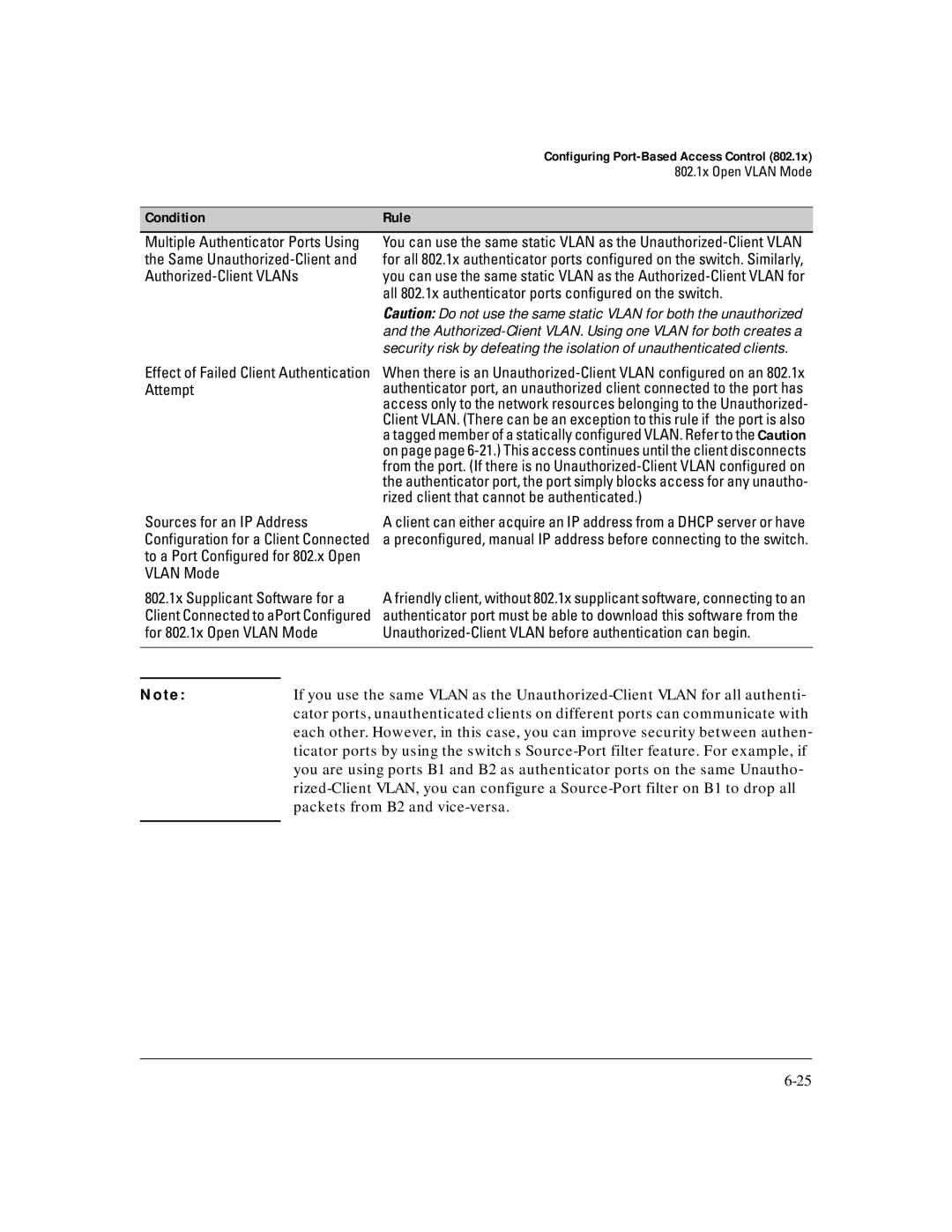
| Configuring |
| 802.1x Open VLAN Mode |
|
|
Condition | Rule |
|
|
Multiple Authenticator Ports Using | You can use the same static VLAN as the |
the Same | for all 802.1x authenticator ports configured on the switch. Similarly, |
you can use the same static VLAN as the | |
| all 802.1x authenticator ports configured on the switch. |
| Caution: Do not use the same static VLAN for both the unauthorized |
| and the |
| security risk by defeating the isolation of unauthenticated clients. |
Effect of Failed Client Authentication Attempt
When there is an
Sources for an IP Address | A client can either acquire an IP address from a DHCP server or have | |
Configuration for a Client Connected | a preconfigured, manual IP address before connecting to the switch. | |
to a Port Configured for 802.x Open |
| |
VLAN Mode |
|
|
802.1x Supplicant Software for a | A friendly client, without 802.1x supplicant software, connecting to an | |
Client Connected to aPort Configured | authenticator port must be able to download this software from the | |
for 802.1x Open VLAN Mode | ||
|
| |
|
|
|
N o t e : | If you use the same VLAN as the | |
| cator ports, unauthenticated clients on different ports can communicate with | |
| each other. However, in this case, you can improve security between authen- | |
ticator ports by using the switch’s
